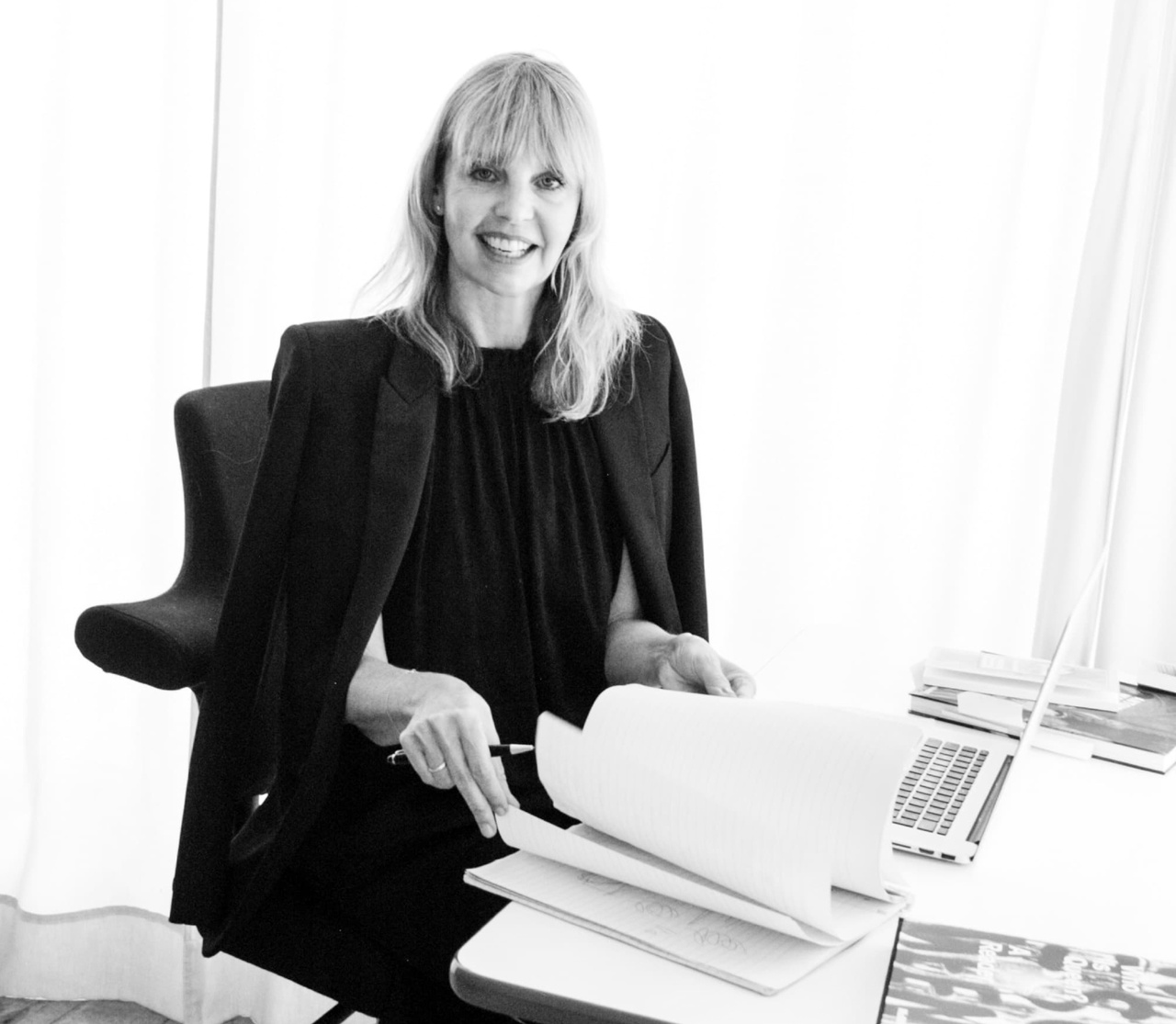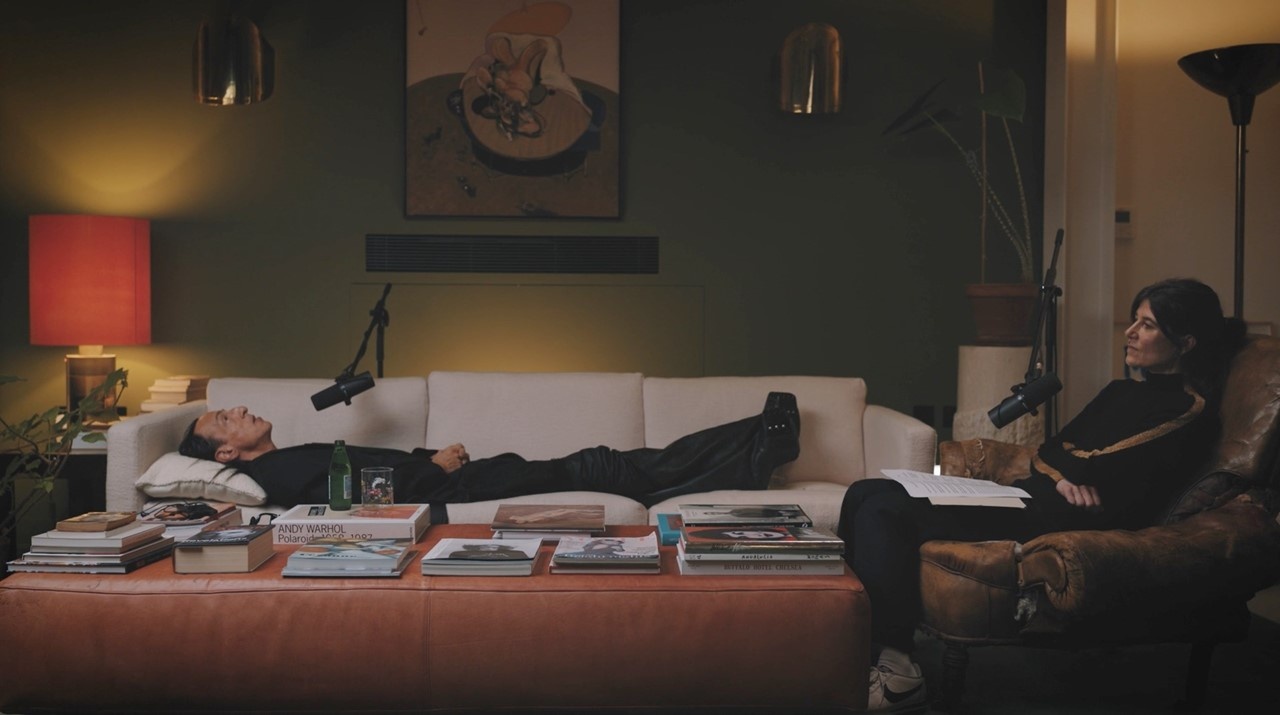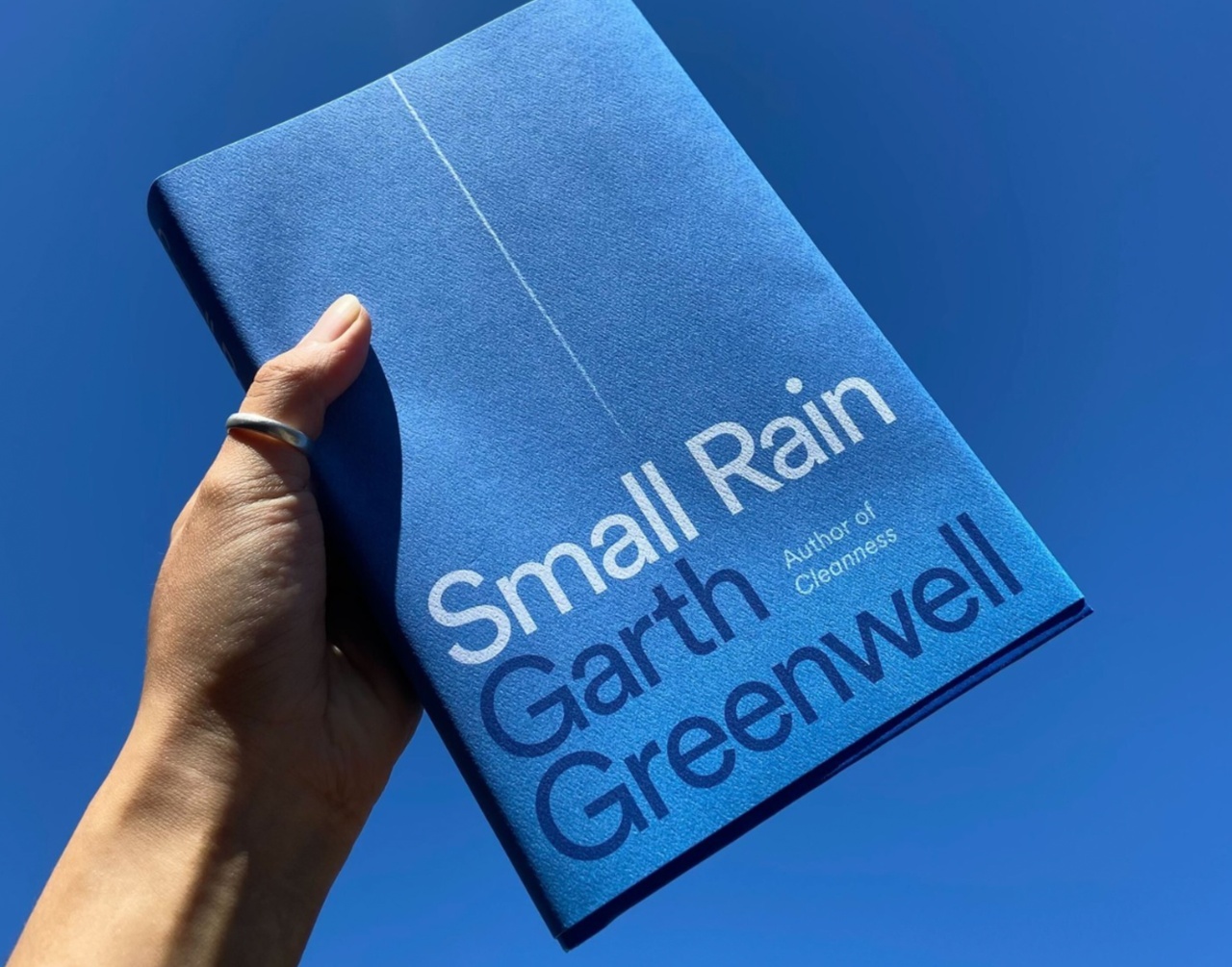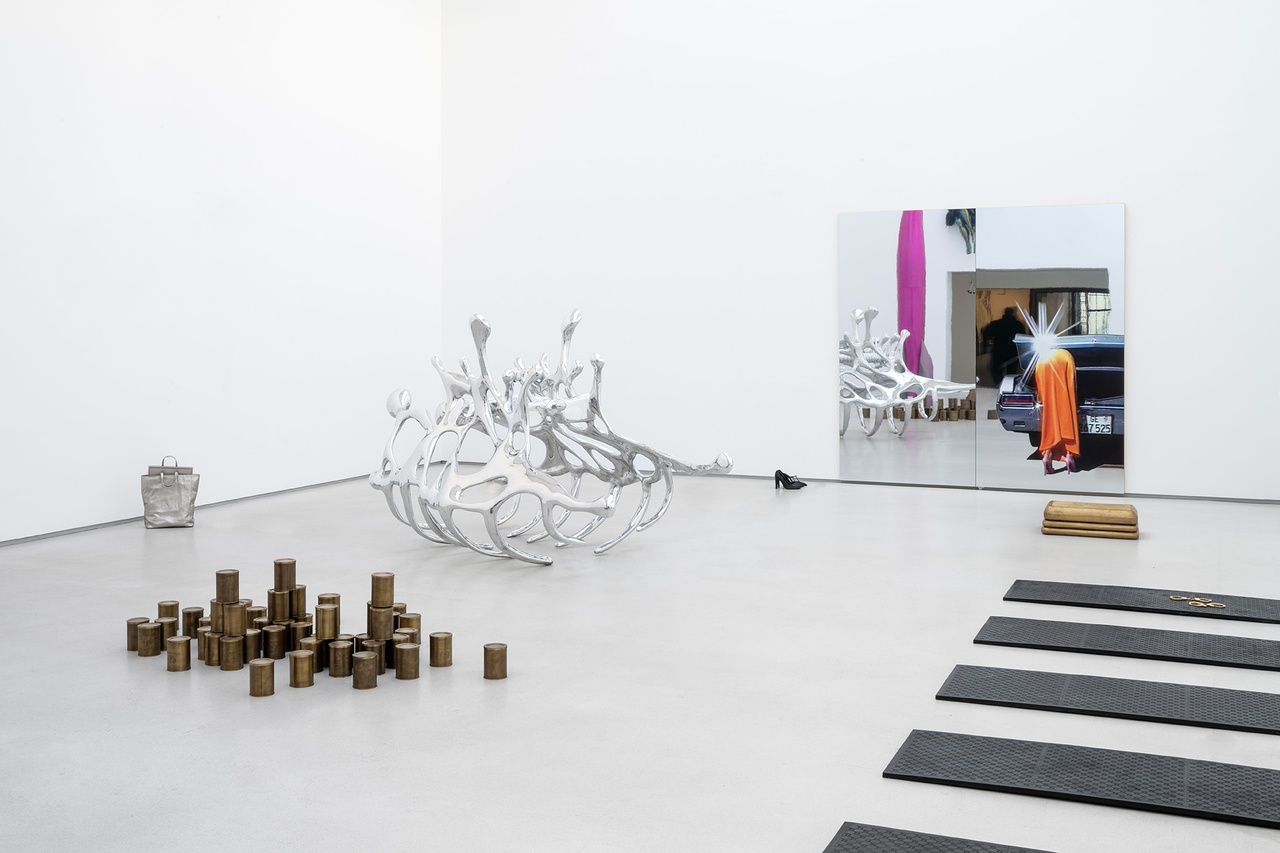SEEN & READ – BY ISABELLE GRAW Bella Freud, Garth Greenwell, Sylvie Fleury

Bella Freud, “Fashion Neurosis”

Bella Freud, “Fashion Neurosis,” First Episode, Rick Owens on Championing Alternative Aesthetics, 2024
Available as both a video and a podcast, this interview series by Bella Freud – fashion designer, daughter of the painter Lucien Freud, and great-granddaughter of Sigmund Freud – has the potential to be seriously addictive. The set-up is based on a therapy session, with Freud inviting celebrities from the worlds of fashion, music, film, and literature – from Nick Cave to Zadie Smith – to lie on her couch and talk about their relationships to fashion. Unlike in a classic therapy session, however, Freud does not sit behind her “patients” but diagonally across from them; the guests often return her questions back to her as a result, and so she also speaks at length about her own fashion neuroses – a dynamic which would be unthinkable with a therapist. Unfortunately, she mentions her father Lucien Freud a little too often, as if having to prove her own value through the dynastic principle. Freud’s questions are primarily aimed at working out fashion’s function in forming an individual identity; the conversations repeatedly emphasize how clothing can help someone become the person they want to be, protecting them like a suit of armor or supporting them in their efforts to move up into a different class. Above all, it is in the conversation with Rick Owens that fashion reveals itself to be a vehicle to a more open and tolerant existence. As a child growing up in a narrow-minded milieu, Owens found that his approach to clothing opened up a different world to him. He also offers an original insight into the relationship between fashion and aging: the more unsettled the face becomes with increasing wrinkles, the more settled and calm the clothing should be. He correspondingly lies on Freud’s couch in his trademark black uniform and platform boots, softly explaining that he considers wearing these extreme boots in airports across the world to be a protest against the tyrannical normality of those spaces. Owens and the fashion designer Stefano Pilati both emphasize that an outfit starts with the right shoes – and falls apart without them. Pilati talks a lot about his mother, whose own wardrobe he dictated as a child, and he remarks how hard this must have been for her. He’s armed with a handkerchief in case his conversation with Freud makes him cry, holding it in his hand as he details his horror of skinny jeans and sneaker socks. Equally notable is Freud’s session with the entrepreneur and influencer Trinny Woodall, who founded the “Trinny London” cosmetics empire and relates how she has all too often been reduced to her status as a “woman” in business meetings with male investors. She spent years looking for an investor; had she been a man, she suspects, things would have been different. Woodall sees women entrepreneurs as being at particular risk of “drive without fulfillment,” energetically pressing on without ever really getting anywhere. In combating this sort of stress, she recommends her own BFF De-Stress Serum, which Freud claims she also needs. There are further opportunities for product placement throughout the sessions, with Freud herself often wearing suits and neckties from her own collection. A final word goes to the episode with Kate Moss, which resembles a confession. Moss explains how she would always cry when she had to show her naked breasts during a photo shoot; as a model, one’s body is not one’s own. Asked if she enjoys being naked, she replies, “Only in heels.” Freud takes a similar view: “I love to have elevation.” That high heels can be empowering is one of the less surprising insights to be gained from this extremely entertaining series of conversations.
Available on YouTube and the usual podcast platforms.
Garth Greenwell, Small Rain

Garth Greenwell, “Small Rain,” 2024
Gareth Greenwell’s book is both an account of a hospital stay and a sort of social novel. It contains not only observations and analyses of America’s dysfunctional health care system but also memories of a love affair, along with general reflections on subjects like the distracting effect of smartphones on our attention spans, or on poetry’s current potential. Suffering severe stomach pains, its protagonist is taken to the hospital, where he spends days on end undergoing torturous examinations that he describes in painstaking detail. Following endless tests, he finds himself confronted with a life-threatening diagnosis of a “tear in the aorta,” and since this phenomenon almost never appears in his age group, he becomes a star patient whose course of treatment must be decided upon. Greenwell describes the existentially unsettling effect of such a diagnosis on the patient’s psyche. As with Marcel Proust’s Recherche, the narrator’s observations trigger memories from his own life that lead him to discuss both his love affair with “L” and his troubled relationship with his father. He recalls an encounter with a Trumpist, describes his everyday working life as a teacher, and offers an in-depth reflection on the atomizing effect that constantly scrolling on our smartphones has had on our attention. But his poetological reflections on the special potential of lyric poetry constitute the common thread running through this narrative. Since numerous aspects of our accelerated digital existence are no longer perceptible, Greenwell’s narrator sees it as poetry’s task to capture lost “stratas of reality”; he argues that while art fundamentally aims at communicating a message, not everything can be communicated, and poems are particularly well suited for preserving what is not absorbed in meaning. The author offers his own poetic maxim here: while he feels obligated to the real and wants to represent it, he also aims at a more general truth. He says he aims to capture objects in their time while simultaneously pointing beyond it – to anchor his writing in time while also making it timeless. I see him as having succeeded in this respect with his book, which takes into account its protagonist’s singular history of illness as well as the social conditions bound up with it. There’s likely never been a more convincing description of a waiting room and the people waiting in it. Greenwell repeatedly shows the specific to be universal by interweaving the particular with the social and structural. His book is also very well written – a worthwhile read all-round!
London: Picador, 2024, 320 pages.
“Sylvie Fleury: Sculpture Nails”

“Sylvie Fleury: Sculpture Nails,” Thaddaeus Ropac, Paris, 2025
Sylvie Fleury’s latest exhibition at Thaddaeus Ropac in Paris is organized as a retrospective that emphasizes the particular fetish character of her works on display in the lower room. Most of the objects, which are arranged tightly alongside each other, have shiny or mirrored surfaces, endowing them with a fetishistic quality. This is especially true of the rocket positioned at the front of the room (First Spaceship on Venus (Beyond Polish), 2022): it has been coated in a luscious pink shade of shiny and shimmering car paint and, similar to Marx’s description of the commodity fetish, seems to deliberately obscure the conditions of its production in favor of its material qualities. Beyond its phallic form, its texture and color are reminiscent of a lipstick, providing a feminine counterpart to the masculine and aggressively coded rocket culture of Elon Musk. The monumentalized hair clip in the center of the room (Hair Clip, 2024) features a similarly shiny mirrored aluminum surface. Here, a banal beauty item has mutated into an insect with pincer-like fangs – into an amorphous figure whose shiny silver surface also seems to conceal the conditions of its production. At the same time, this monumental hair clip appears somehow uncanny and animated – again resembling the fetishized commodity. In this case, however, the object is clearly a product of artistic practice, which distinguishes it from Marx’s description. For where the fetish after Marx abstracts and transforms the concrete labor it is based on, what we find ourselves confronted with here is instead the product of artistic labor. On top of this, Fleury’s readymades are all objects with fundamentally female associations; take the aforementioned hair clip, or the early vitrine work Coco (1991). On display in the front room of the gallery, the latter presents a pile of empty Chanel make-up packages as if they were historical artefacts. Fleury draws our gaze to the design of the packaging’s branding – gold lettering on a glossy black background – which has long stood as a symbol of luxury and high-end cosmetics; here, Chanel perfume bottles and eye-shadow boxes can be desirable cult objects even when they’re empty. In addition to beauty rituals, the artist also addresses the pressures of fitness culture, placing cast-bronze Gucci yoga mats in a Carl Andre–style arrangement on the floor (Tapis de Yoga Gucci, 2001–02) or translating the three-tiered stepper from Jane Fonda’s workout product line into a minimalist bronze relic (Original Stepper, 2024). A collection of SlimFast cans of various flavors – again cast in bronze – is also arranged on the floor. They communicate with the history of the can within the art of the 1960s, from Jasper Johns’s Ale Cans (1960) to Piero Manzoni’s Merda d’artista (1961) and the various Campbell’s soup cans Andy Warhol produced (again in various flavors) in 1961. More than other containers, cans evoke the existence of a mythical inner space in spite of their industrial seriality, which is what makes them such interesting objects for minimal sculpture. Beyond this, Fleury’s SlimFast cans also point to the pressure to be slim, which women especially are still subjected to. That the artist herself follows the imperative to be stylish is evidenced by the bronze casts of the mercilessly narrow Alaïa shoes she once forced her feet into. That it is always also her reality we are seeing is particularly clear in the new work Vanity Case (2024), a two-part print on mirrored aluminum that brings to mind the mirror works of Michelangelo Pistoletto and shows the artist from behind – wearing heels, naturally – as she packs her cosmetics case into the trunk of her car.
A few final words go to my favorite piece, Celine Bag (2017), a cast-bronze tote bag containing a small bronze canvas, as if it were to be carried about. Not only does this work refer to one of the reasons for painting’s historical triumph – its transportability – but it also plays on the omnipresent boom in paintings on canvas and establishes a link between Fleury’s treatment of surfaces and techniques used by artists to apply paint.
The upper room of the gallery is reserved for Fleury’s neon works, which also draw on the language of cosmetics and luxury goods: perfume names like “Hypnotic Poison” or “Eternity Now” are translated into neon signs, trapping the desire they trigger in glowing material form. Fleury’s decision to keep the different types of objects featured in the exhibition separate was a good one, in my view, since it gives both the cast-bronze readymades and the neon works the space they need to reveal their particular qualities. Unfortunately, the objects on the ground floor are so tightly arranged that they get in each other’s way slightly. But given the way Fleury plays with their fetish character, feeling somewhat closed in on by them also makes sense.
Thaddaeus Ropac, Paris (Marais), January 11 to February 22, 2025.
Isabelle Graw is the cofounder and publisher of TEXTE ZUR KUNST and teaches art history and theory at the Hochschule für Bildende Künste – Städelschule in Frankfurt am Main. Her most recent publications include In Another World: Notes, 2014–2017 (Sternberg Press, 2020), Three Cases of Value Reflection: Ponge, Whitten, Banksy (Sternberg Press, 2021), and On the Benefits of Friendship (Sternberg Press, 2023); and the forthcoming Fear and Money: A Novel (Sternberg/MIT Press, 2025).
Image credit: 1. Photo Rob Kulisek; 2. Bella Freud; 3. Upstart and Crow; 4. Courtesy of Thaddaeus Ropac gallery, Photo Pierre Tanguy

